

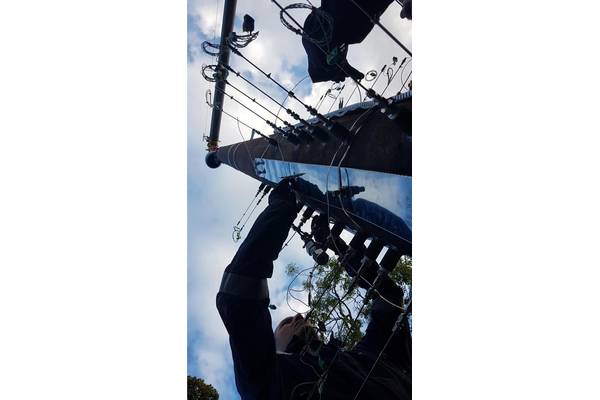
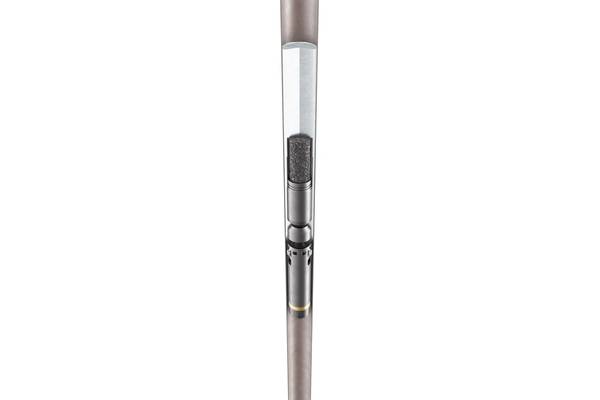
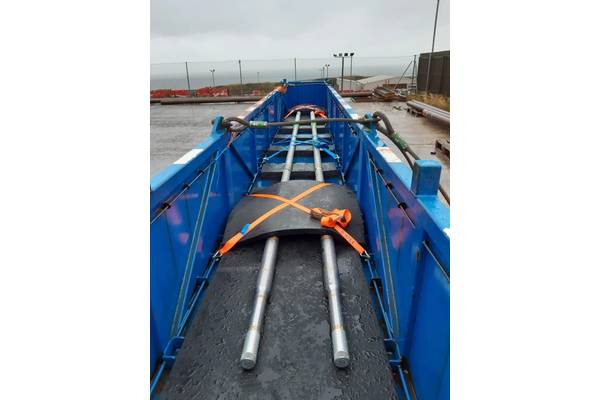
Sitting at 49% of the total cost of decommissioning, wells plugging and abandonment (P&A) has long been high on the hit-list on the decommissioning cost reduction agenda. It’s a task that has no returns on the cost to do it, and activity is increasing. Elaine Maslin looks at some of the latest technologies aiming to reduce that cost.
Well decommissioning activity outstripped exploration, appraisal, and development activity combined on the UK Continental Shelf for the fourth year running, Kenny McAllister, section chair of the Society of Petroleum Engineers (SPE) in Aberdeen pointed out to the Offshore Decommissioning Conference, held online late November, citing data from Oil & Gas UK’s latest Decommissioning Insight Report.
As activity rises, technology companies are also gaining more traction with their concepts for alternative barriers to permanently seal wells. One of those is Aberdeen based isol8. Last year, the company, set up in 2017, qualified its metallurgically bonded-alloy barrier technology in an offshore trial. Isol8 now has 7-10 on and offshore projects lined up for 2021. Others, including BiSN and Norway’s WellStrøm, are also making significant inroads.
Isol8’ing wells
The drive to create new barriers materials is largely to reduce reliance on rigs for offshore operations. “The big cost saving for well P&A is avoiding the need to pull tubulars,” says Louden. “The holy grail is for phase one zonal isolation, phase two intermediate isolation, and the environmental cap to be deployed without the need for a rig.” This is particularly valuable for subsea wells which can cost $10 million per well, he says.
Isol8’s goal is to create a metallurgical bond with steel with the highest sheer bond strength and life expectancy in the industry, says Louden. The company uses alloys, bismuth, and non-bismuth based, that are melted in the well using a thermite heating system to create a barrier with a metallurgical bond with the steel or expands against the in-situ cement and/or geological rock to create a barrier.
The metallurgical bonding between the steel and alloy creates a kind of sub-aquatic soldering, says Louden, so there’s higher shear bond strength than simply relying on friction to create a tight seal. That also means less alloy is needed in shorter lengths than the unbonded bismuth-based seal alternatives, he says. The entire system, called Fusion, is adaptable to meet well-specific conditions. The same 3 ½ inch tool string size can be used in a wide variety of well geometries and can be deployed through tubing on wireline or slickline.
Last September, a 5-inch Fusion barrier was qualified at isol8’s facility in the US. The following month, a Fusion barrier was deployed down to 10,765ft on a 3 ½ inch tool string in a 110°C 30-degree deviated well for Repsol Sinopec Resources’ UK on their Fulmar field, – its first offshore trial. There, 1m of alloy above the thermite heater was deployed on e-line and, once it was set, the world’s first bonded-alloy barrier was tested with pressure from above and below.
The bridge linked North Sea Fulmar Alpha platforms are about 217 miles east of Dundee and were installed in 1981 with first oil in 1982.
isol8 is now preparing for 7-10 projects this year with multiple operators and for a range of different well geometry applications. The next will be onshore; again a 3 ½ inch tool string but this time forming a 7-inch barrier. After that, isol8 is going to isolate a 7-inch perforated well out to the 8 ¼ inch rock in their first subsea well application. This is a water shut off project, to seal beyond the 7-inch casing and isolate a lower zone from an upper zone. The next North Sea project will then be a 3 ½ tool to form a bonded-alloy barrier inside4-½ tubing and the 9 5/8-inch annulus.
As well as using a solid thermite heater, isol8 also fluidizes thermite to fill the wellbore. For the 4-½ by 9 5/8-inch annulus P&A project, for example, instead of a solid thermite heater, isol8 will fluidize the thermite to create a platform through the perforated annulus on to which the alloy can set to form an ultra-high expansion seal. But Louden says that whilst isol8’s technology can be used as an alternative to cement, he expects that alloy-based plugs will be used to form hybrid P&A barriers in combination with competent cement.
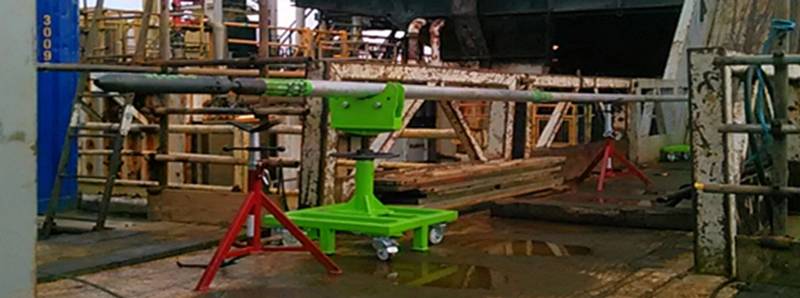 Fusion tool string immediately before it was run, sitting on tool stands. Image from isol8.
Fusion tool string immediately before it was run, sitting on tool stands. Image from isol8.
BiSN breaks own records
UK-based BiSN, which works with thermite to melt bismuth-based alloys into plugs, has also been hitting milestones. The firm surpassed its record for the largest bismuth plug with a 15,382kg (33,911lbs) P&A tool deployed in a 30-inch casing in a well on Aker BP’s Valhall field in the Norwegian North Sea, 290km south of Stavanger – equivalent to the size of 11 cars, the firm highlighted. Its previous record was a 4,695kg (10,351lbs) tool inside an 18 5/8-inch casing on the same field in 2018. The latest plug, based on BiSN’s Wel-lok M2M technology, was an environmental plug, set in September last year. The weight required the use of special lifting cradles to be able to lift the tool, measuring 56ft long, says CEO Paul Carragher.
It was the first in a 40 plus tool campaign providing gas tight environmental barriers on Valhall wells – where compaction and seabed subsidence are known issues. Tool sizes to be run on the project include 13-3/8 inch out to a 20 annulus, 18 5/8 inch out to 24 inch, and 20 inch out to 30 inch on wells, which are section milled before the tool is run.
The company, in which BP is a co-investor through BP Ventures, says it has now deployed its bismuth solution more than 180 times with no emittance of gases once placed. 2020 was a big year, with 103 tools run, compared with 50 in 2019 and 17 in 2018, as the company’s technology has been adopted and not just for P&A. Recent projects include a seal through two strings (9 5/13 inch out to 13 3/8 inch then 20 inch) offshore California, which had been section milled, in case of lack of integrity in the cement behind the casing. On a new well, in Denver, the bismuth alloy solution was used to create a gas-tight annulus to prevent annular gas migration. The bismuth alloy could be deployed over just 6ft in a “surgical way” exactly where the issue is instead of needing 100ft of cement, says Carragher. This includes deployment via e-line, slick line, coil or drill pipe, he adds. Coming up is a campaign from a light well intervention vessel offshore Angola for BP, part of a follow-on campaign BiSN was involved in previously. This will see the tools run subsea using ROVs.
While section milling is still done, BiSN is looking at an alternative based on using liquidized thermite. BiSN normally uses thermite as a heating element. But the liquidized version will be pumped through perforations and ignited to effectively melt out casing sections, including control lines, etc., ready for BiSN’s regular plugging tools to be run or just to aid pulling the casing. This will be able to be done through multiple casings, says Carragher. In fact, the company recently tested the tool on a mock-up to melt through 2 7/8 inch then 7 inch and then through a 9 5/8-inch casing, with just 25 kg of thermite, says Carragher.
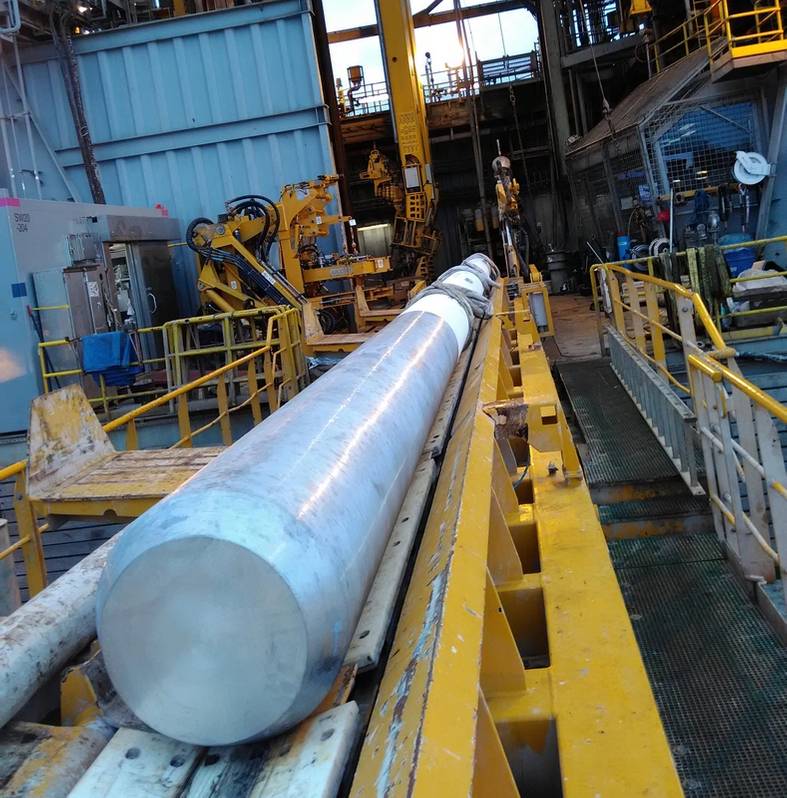 BiSN’s 15,382kg (33,911lbs) P&A tool was deployed in a 30-in casing in a well on Aker BP’s Valhall field in the Norwegian North Sea. Photos from BiSN.
BiSN’s 15,382kg (33,911lbs) P&A tool was deployed in a 30-in casing in a well on Aker BP’s Valhall field in the Norwegian North Sea. Photos from BiSN.
An electrically heated WellStrøm
Also working with bismuth alloy is Norwegian consortium WellStrøm. Unlike others, WellStrøm is using an electrical heater to melt its bismuth downhole. Formed last year, the consortium brings together Norwegian company Aarbakke Innovation’s downhole electrical heater technology and well intervention techniques, consultancy K2 Oilfield Services’ perforating and P&A expertise, and UK-based Rawwater Engineering Company’s bismuth alloy knowledge (OE: October 2019).
Late last year, the company performed system integration trials of its technology, placing and melting a bismuth alloy using a cable deployed downhole electrical heating technology from Aarbakke. This was in 9 5/8 inch within 13/3/8 inch casing, with a cement-filled annulus. To show milling operations could be avoided, Wellstrøm, together with Core Laboratories, achieved a controlled shattering of the cement annulus ready for the application of molten bismuth. It was pressure tested during placement and is now back at WellStrøm headquarters for testing to ISO14319. WellStrøm says the sealing concept is based on a 3,000-year-life seal design already qualified by Bureau Veritas to DNV-RP-203, ISO 14310 (VO).
The trials follow a two-year program to deliver 7-inch alloy plugs for deployment in the North Sea, rated to 6,000 psi differential pressure at 60 cm (2inch) in length. This included developing the formulation of the metal seals, supported by Innovate UK. To establish mechanical properties and creep behavior under service pressure and temperature conditions, Rawwater worked with the University of Aberdeen, through an Oil & Gas Innovation Centre (OGIC)-funded partnership. The result is a suite of alloys for onshore, offshore and subsea P&A in downhole conditions from 70 – 90°C and 140 – 160°C.
Rawwater managing director Professor Robert Eden says he’s “convinced of the superior capabilities of bismuth as a cost-effective alternative for sealing well abandonments and resealing failed abandonments that were previously plugged using cement. Thanks to the extensive system integration trials that have taken place through the Wellstrøm consortium, there is now also the means to deploy bismuth alloy seals in a totally controllable way.”
Next for WellStrøm is a program, supported by Demo 2000 funding from the Research Council of Norway, which will lead to a field applicable tool system.
Interwell Cannseal too
Operating in a similar space and also subject to corporate activity is Interwell. Also based in Norway, Interwell, which has been developing thermite tools to burn through well sections, recently acquired Cannseal, a Norwegian technology company that has developed a proprietary annular isolation technology based on a tailored epoxy recipe. This is to provide a sealant into the annulus at pre-defined locations, to help seal off micro annuli, or also leaking production packers, for example, to re-establish well integrity. A form of its CannSeal epoxy is currently being developed for permanent P&A operations when injected into the cement micro/macro annulus.



